Award-Winning Designer Raine Clarke-Wills: How Gardeners Can Promote Biodiversity

Contributions From RAINE CLARKE-WILLS

Raine Clarke-Wills is an award-winning Garden Designer with over two decades of experience, holding a Distinction in Garden Design and Horticulture from Chichester University. She has created five award-winning gardens for the RHS Hampton Court Palace Flower Show since 2009. Her Surrey-based company, Raine Garden Design, specialises in bespoke gardens and planting schemes.
Raine Clarke-Wills is an award-winning Garden Designer with over 22 years of experience, creating stunning and unique gardens across the south of England.
Her work has been recognised at the RHS Hampton Court Palace flower show, where she has designed and built five award-winning gardens since 2009.
Please note that all imagery featured in this interview has been provided with permission by Raine Clarke-Wills.
Can you describe your journey into garden design and what inspired you to pursue this career?
“I have always been inspired by gardens,” Raine begins.
“I had my own garden patch at school at the age of 4 and fell in love. From then on, I found any excuse to be outdoors creating in nature.
“I remember creating my own garden in my first house when I was 20 years old. At this point it was my peace and was how I spent my free time, but I hadn’t thought of pursuing it as a career.
“I had a long journey of varied work experience from Flight Attendant, through to sales and everything in between. It was only after I had my children that I took the opportunity to build a career around my passion.
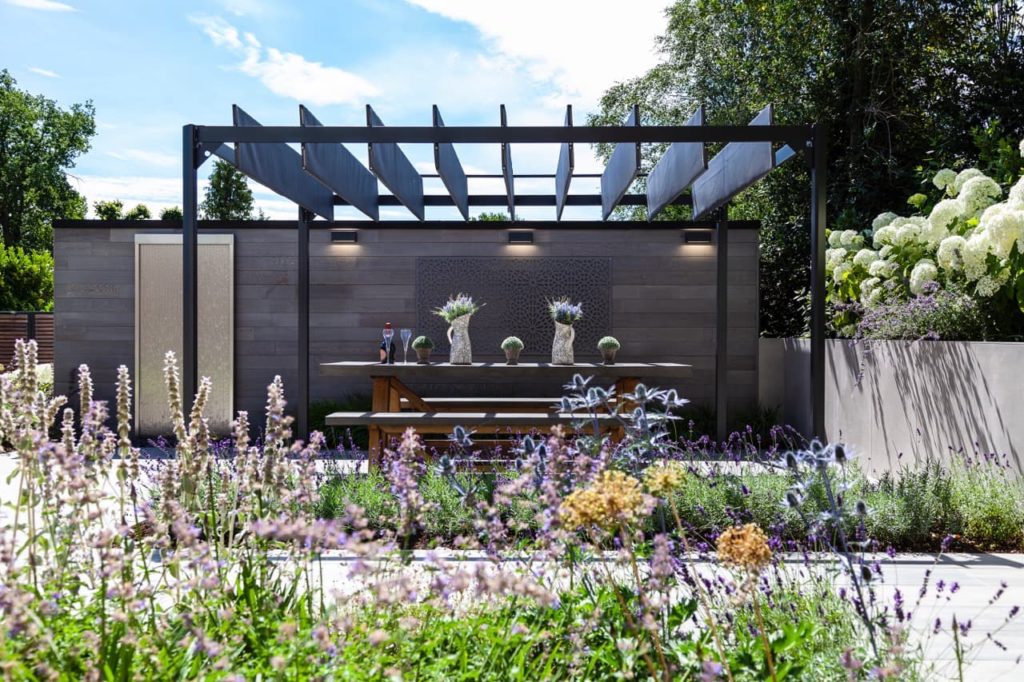
“I am mindful of how fortunate I am to be so excited on a Sunday evening, anticipating Monday morning, and a new opportunity to do what I love. There are so many reasons why this job inspires me.
“I am naturally drawn to people, I like finding out what makes them tick. I am a big believer in sharing any knowledge that I have acquired in my years of designing and building gardens and this is something I intend to do with each client. I am inspired by bringing nature into contemporary living.
“During the design process, there is a pinnacle point where one can see the practical elements of the modern-day living experience interconnect beautifully with nature. This link is created seamlessly through the careful orchestration of form and structure.”
With over 22 years of experience in garden design, how has the industry evolved during this time, and how have you adapted to these changes?
“I have noticed that people want their gardens to be extensions of their homes now,” she explains.
“They want to savour every moment they can outside, resting, entertaining, socialising and cooking, amongst other things. I believe I have noticed a slow shift towards this over time, but it was definitely accelerated by the pandemic. I believe the circumstances moved people to appreciate the freedom to go outside and enjoy the precious moments that nature provides us with.
“At the same time, I think it motivated people to do more with their outdoor spaces, especially as at one point this was the only contact with the outside that was possible. The way that this presents itself in design work is the inclusion of kitchens, dining areas and increased shelter such as full-cover pergolas, to enable people to enjoy their gardens year-round.
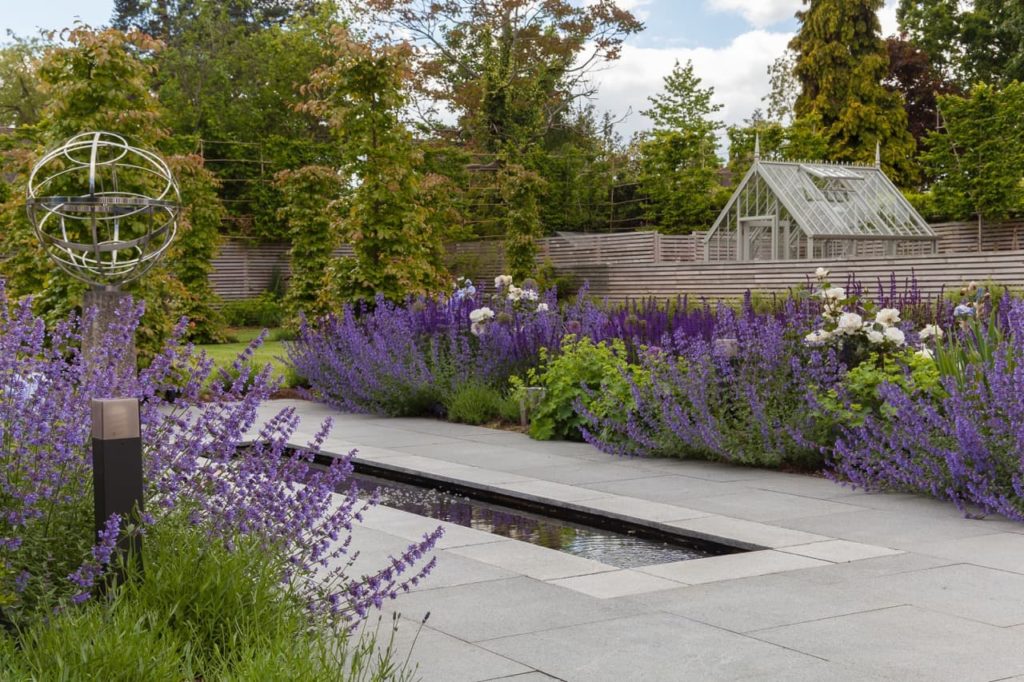
“I had this approach from the very beginning of my career, I believe a garden to be a home just as much as a house. However, with this in mind, I have become more attentive to how we share our outdoor spaces with the rest of Mother Nature.
“I aspire to create gardens that have a positive impact on the environment. I believe by making the right choices, we can achieve a healthy symbiosis between humans and the rest of nature.”
You’ve designed and built five award-winning gardens for the RHS Hampton Court Palace flower show since 2009. Can you share the inspiration behind one of your favourite designs for this show?
“One of my favourite gardens was ‘Layers and Links’. It was inspired by the idea of someone travelling around the world and wanting to create a garden that was influenced by the beauty and culture of the countries they had travelled to.
“It was intended to evoke nostalgia from the memories of various different places around the globe. The design possessed clean forms and structure, balanced by soft, pretty planting.
“My favourite part was a Persian-style rug that we created from part of the paving pattern. I have always enjoyed travelling and often use the time to look for elements to incorporate into my design work, as I believe there is a lot we can learn from different cultures.”
What are the key elements you consider when designing a garden for a client?
“I don’t have specific key elements in mind as everyone is different,” says Raine.
“I always go in with the approach of wanting to learn about the client. I do this through an in-depth exploration of who they are, their lifestyles, values and what they are looking to achieve.
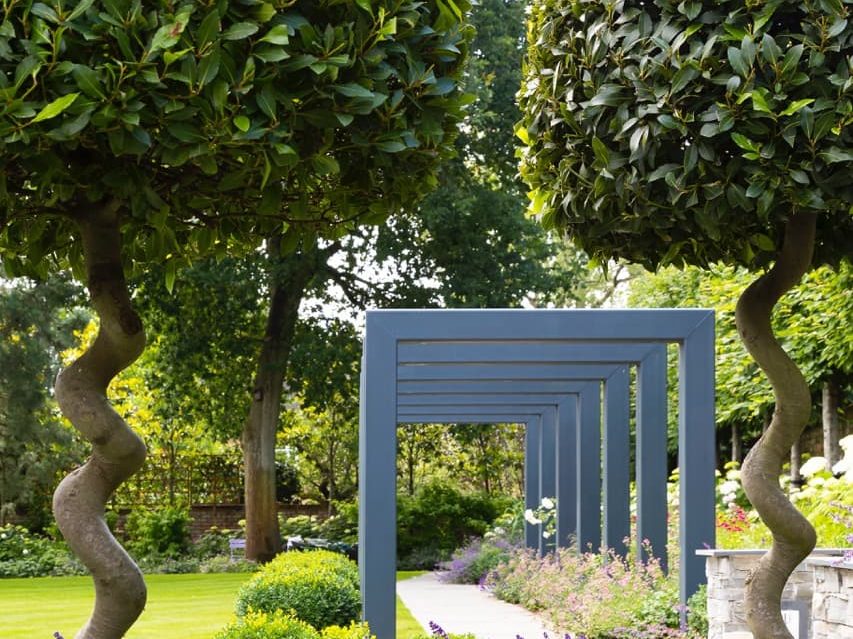
“Often they won’t know right away and part of my job is to ask the right questions, that both inspire and perhaps challenge their preconceptions. My clients are always at the focal point of the design process.”
How can gardeners promote biodiversity in their gardens?
“Biodiversity plays an important part in creating environmentally friendly gardens. Part of this involves [the] use of successional planting, including planting that attracts pollinators and other insects, to ensure gardens perform optimum ecological functioning all year round.
“Companion planting can be used in place of pesticides, which ensures we are not harming nature’s creatures. Wildflower lawns and green roofs are a beautiful way to integrate a habitat for wildlife into a design.
“Using trees and hedging for beautiful boundaries can form havens for wildlife and have the added benefits of trapping pollutants and storing carbon. Eco-friendly water features are also a welcome addition to animals, they can attract birds and other insects as well as provide a home for water-dwelling creatures and sustenance for animals.
“Aquatic and marginal plants can be used to oxygenate the water. I think the main point is that with the right choices you can create a garden that is both aesthetically beautiful, as well as fit for human beings to live alongside nature.”
How can you mitigate the effects of extreme weather conditions on a garden?
“This is a hot topic considering the effects of climate change on our weather conditions,” Raine explains.
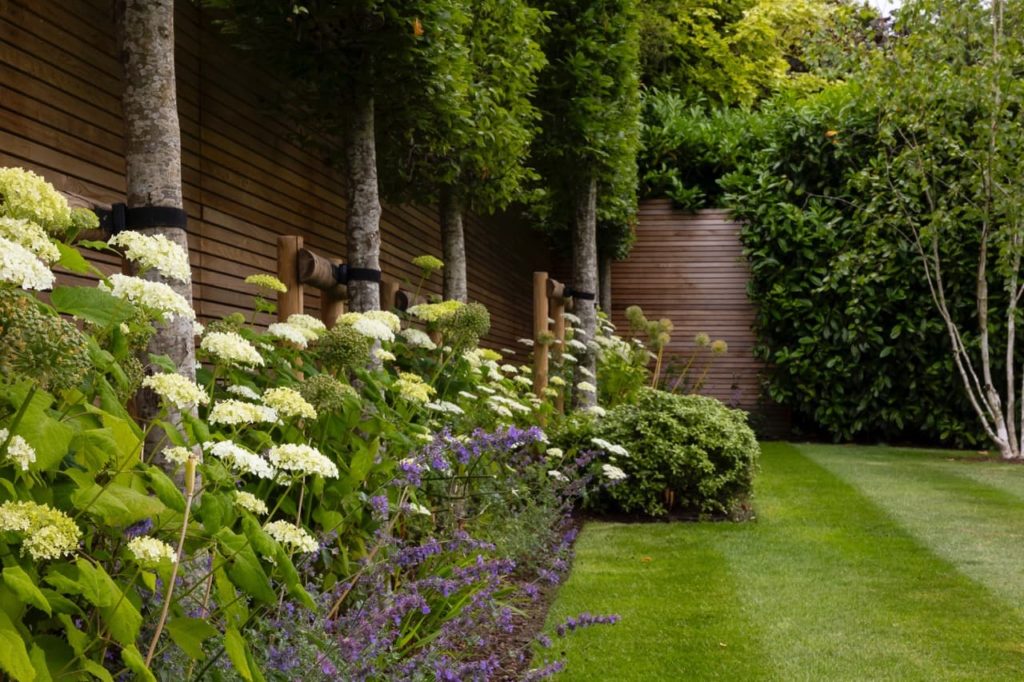
“Using resilient and diverse planting can be a great help. A good example of this would be the elegant Carpinus betulus. Drought-resistant plants include Lavandula, Rosmarinus officinalis, and various species of Salvia.
“When it comes to flooding, you can protect your garden by ensuring there aren’t any sealed surfaces and use a permeable paving design to ensure water can drain into the soil. Evergreen hedges are also an excellent way to protect your garden from extreme rainfall.”
Are there any trends or innovations in garden design that you believe will shape the future of the industry?
“Protecting the environment is of the utmost importance. Along these lines, green roofs are an ingenious and beautiful way to promote biodiversity, protect from flooding, and even cut down on the need for heating as they provide insulation.
“When designed well they are a stunning symbol of how we can live in a way that works with modern living, while also being deeply interconnected to nature”
Are there any upcoming projects or collaborations that you’re particularly excited about?
“I am very excited about a build that has just begun,” she shares.
“There is a large expanse of space, which is a dream platform to create from. The plot overlooks stunning views of the countryside. The client brief included introducing formality and sharpness, which created an exciting challenge in how to transition this contrast into the soft lines of the countryside.
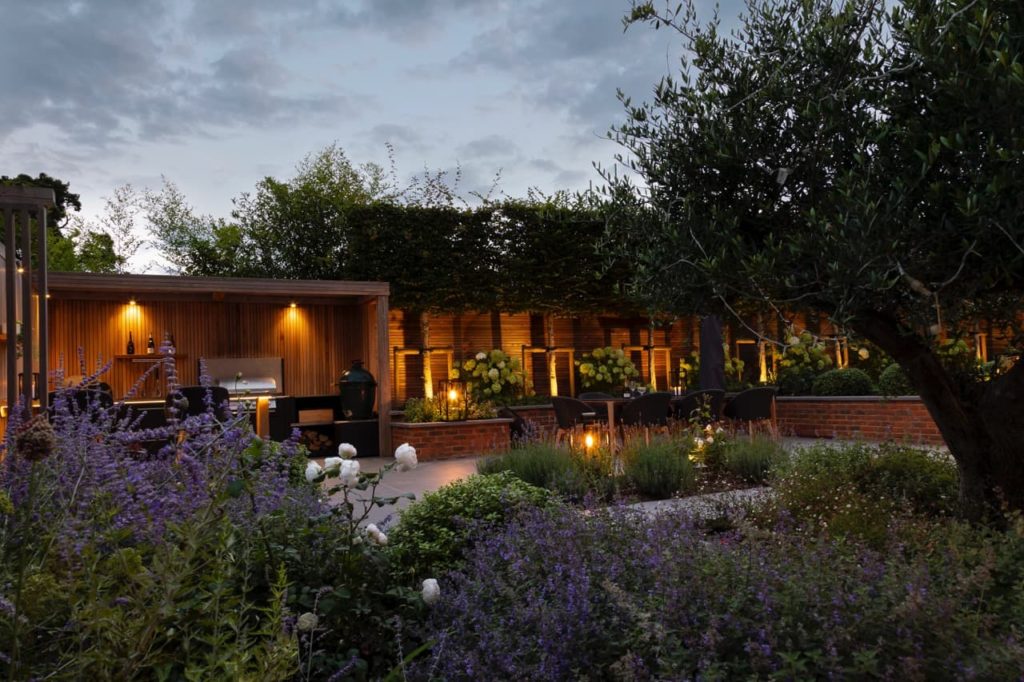
“I am collaborating with an extremely talented sculptor on this project. Some of the elements I am most excited to see brought to life include a striking set of circular steps alongside a stunning wildflower meadow.
“These steps are made particularly magnificent by an enchanting water feature that’s set within the impressive stonework, first running into a water rill and then travelling beneath the feature steps and along intricate, interconnecting channels embedded within each step.”

